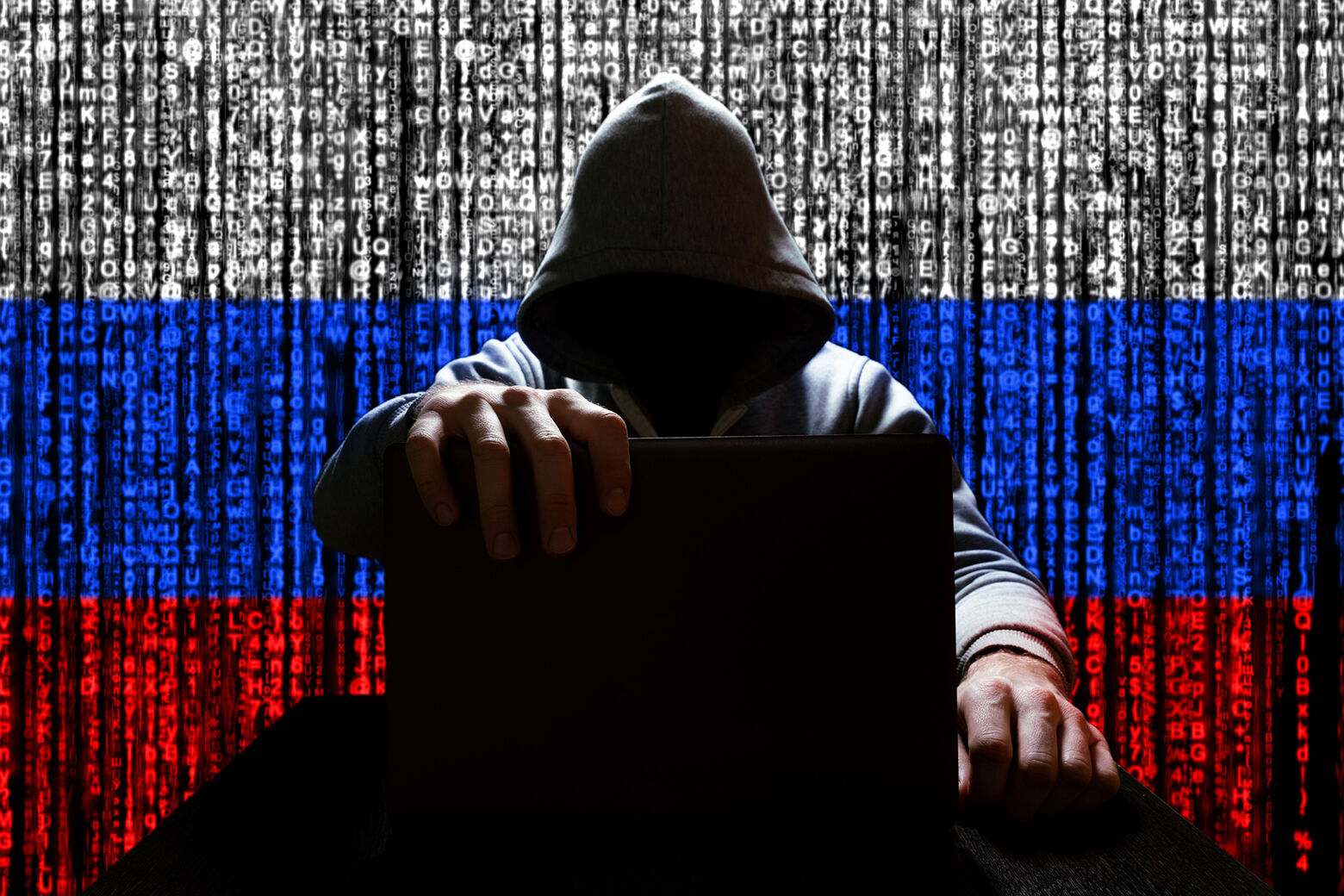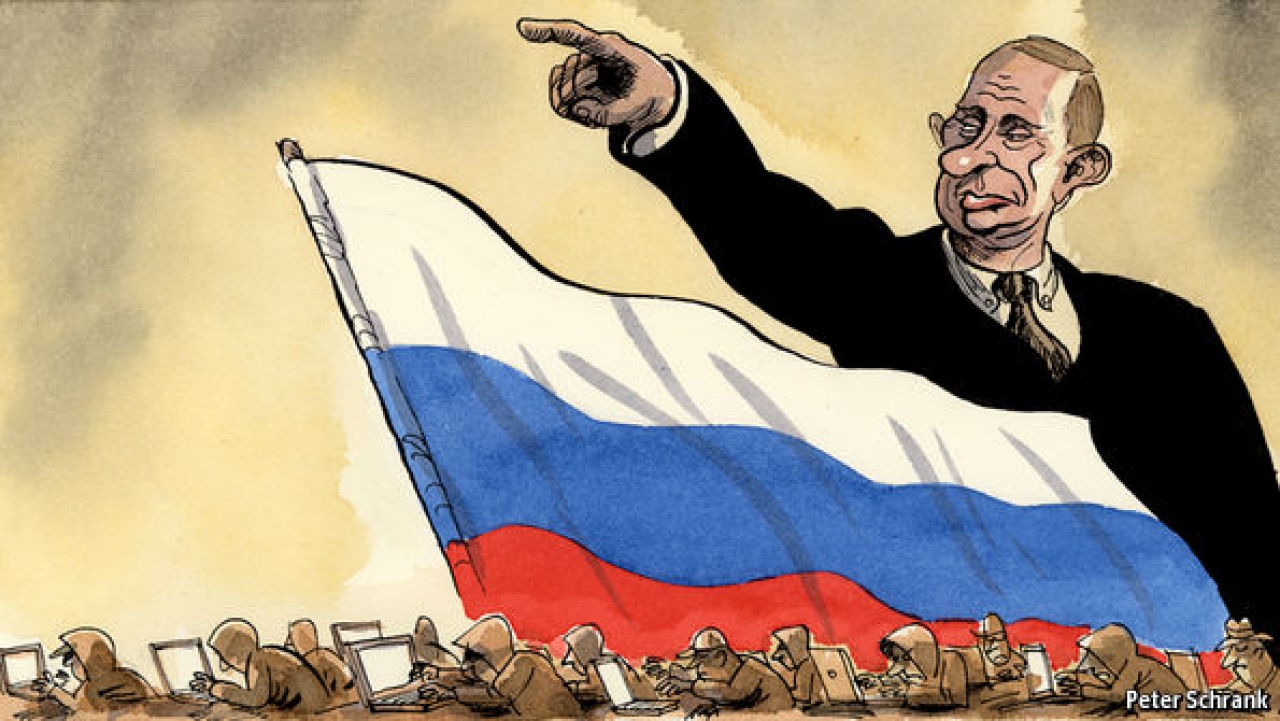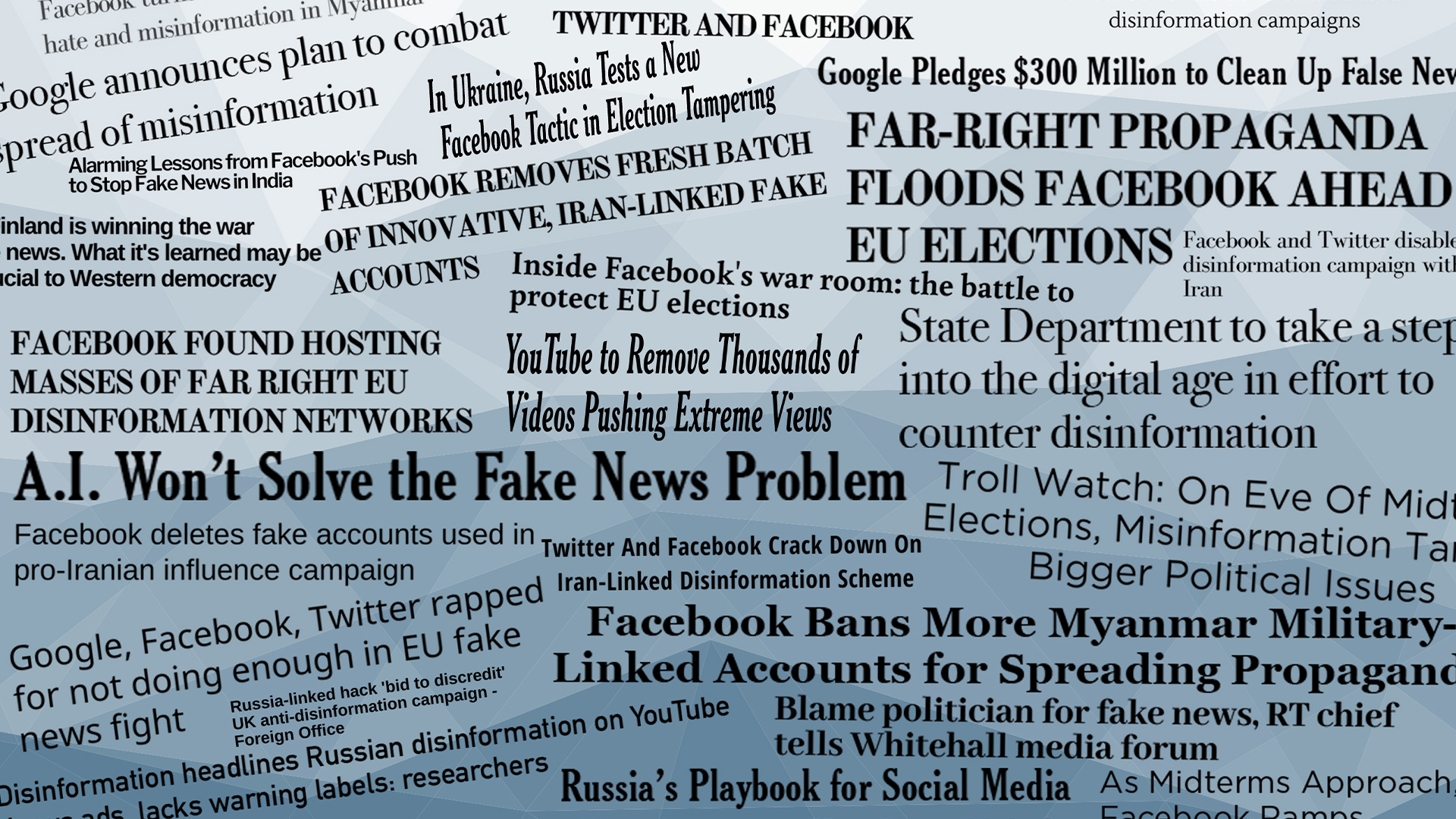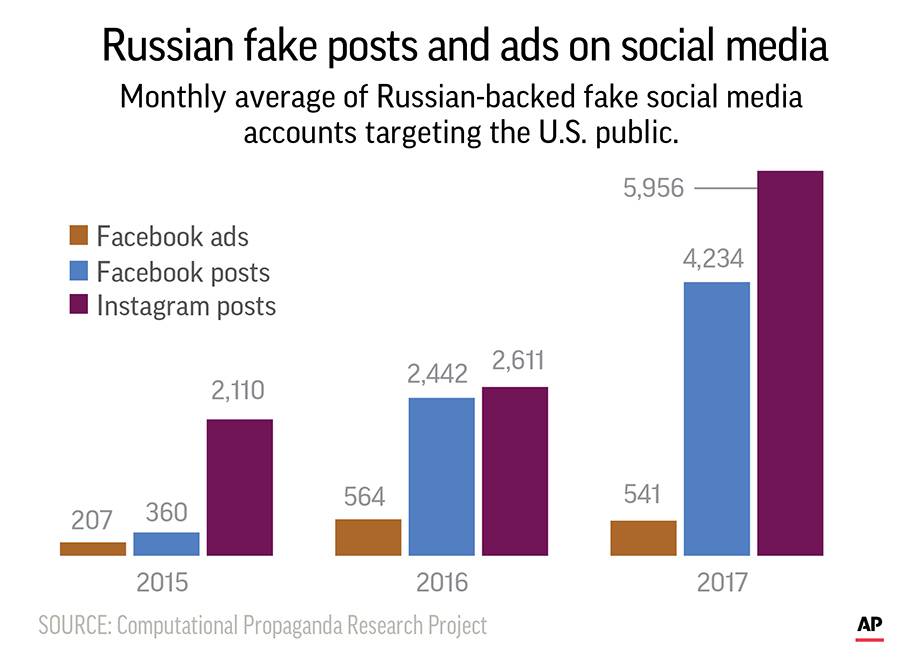Spread of Russian Misinformation
Harmful foregn influence operations from countries all over the world are not a new issue, but considering the position
it holds as a geopolitical adversary of the United States, Russia’s influence on American media has become a more significant
problem. Types of operations that have been conducted in the past include hacking political campaigns, bribing government officials,
disinformation campaigns, and conducting cyberespionage.

 With the rise of nationalism and authoritarianism around the world, democracies become especially vulnerable to being undermined by
foreign autocratic regimes who are able to exploit the freedom of the American press. Another large contributor to this problem is the digital
revelation, which has permanently changed how people communicate and receive information. While there are many aspects of technology that are
overwhelmingly positive, there are many sides of the media that are largely unregulated when it comes to far-right extremism, which creates
space for foreign interference.
With the rise of nationalism and authoritarianism around the world, democracies become especially vulnerable to being undermined by
foreign autocratic regimes who are able to exploit the freedom of the American press. Another large contributor to this problem is the digital
revelation, which has permanently changed how people communicate and receive information. While there are many aspects of technology that are
overwhelmingly positive, there are many sides of the media that are largely unregulated when it comes to far-right extremism, which creates
space for foreign interference.

 It is clear that countries such as Russia want to extend their influence on the world, but though their interference with American media is
extensive, they are not a main economic competitor of the United States. Therefore, their strategy of disrupting and unsettling the international
order is based much more on creating chaos than legitimacy. With regard to the United States and its allies, Russia’s main goal is to discredit
democratic establishments and to divide Europe, and the international system between countries that was reinforced after the Cold War.
Successful models of democracy, like the U.S. and many European countries, are a threat to Russia’s long standing authoritarian regime.
It is clear that countries such as Russia want to extend their influence on the world, but though their interference with American media is
extensive, they are not a main economic competitor of the United States. Therefore, their strategy of disrupting and unsettling the international
order is based much more on creating chaos than legitimacy. With regard to the United States and its allies, Russia’s main goal is to discredit
democratic establishments and to divide Europe, and the international system between countries that was reinforced after the Cold War.
Successful models of democracy, like the U.S. and many European countries, are a threat to Russia’s long standing authoritarian regime.

 One particular operation and very significant disinformation campaign conducted by Russia was during the 2016 Presidential Elections which saw
the widespread exploitation of social media. By doing so, Russia was able to make reality and fiction often indistinguishable, especially to
impressionable consumers, and also contribute to voter suppression across the country which ended up aiding Donald Trump’s ascend to the White
House in 2016. This was not the end of the misinformation campaign however, and Russia is still working to worsen racial and political tensions
at a time of high political contention.
One particular operation and very significant disinformation campaign conducted by Russia was during the 2016 Presidential Elections which saw
the widespread exploitation of social media. By doing so, Russia was able to make reality and fiction often indistinguishable, especially to
impressionable consumers, and also contribute to voter suppression across the country which ended up aiding Donald Trump’s ascend to the White
House in 2016. This was not the end of the misinformation campaign however, and Russia is still working to worsen racial and political tensions
at a time of high political contention.

 These tactics supported the surge in racist and anti-immigrant ideals as far-right extremists branded themselves as “patriotic” individuals.
While Russia’s interference with American politics at a level this extreme was not the only reason for this, evidence shows that they certainly
are a contributor to this problem. In one study conducted by the Computational Propaganda Research Project, a recorded average of 5,956 monthly
fake social media posts was seen by Russia in 2017 on the platform of Instagram alone. There were another 4,234 fake posts seen on Twitter.
This misinformation has extremely damaging long term effects on the country, which can be seen by the election of certain presidents and the
rise of domestic terrorism in the country. For example, earlier this year, there was a violent insurrection at the U.S. capitol on January 6th,
which was fueled by this nationalism and constant misinformation seen on social media, that have convinced large portions of the population.
Sources:
Center For American Progress
AP News
These tactics supported the surge in racist and anti-immigrant ideals as far-right extremists branded themselves as “patriotic” individuals.
While Russia’s interference with American politics at a level this extreme was not the only reason for this, evidence shows that they certainly
are a contributor to this problem. In one study conducted by the Computational Propaganda Research Project, a recorded average of 5,956 monthly
fake social media posts was seen by Russia in 2017 on the platform of Instagram alone. There were another 4,234 fake posts seen on Twitter.
This misinformation has extremely damaging long term effects on the country, which can be seen by the election of certain presidents and the
rise of domestic terrorism in the country. For example, earlier this year, there was a violent insurrection at the U.S. capitol on January 6th,
which was fueled by this nationalism and constant misinformation seen on social media, that have convinced large portions of the population.
Sources:
Center For American Progress
AP News

 With the rise of nationalism and authoritarianism around the world, democracies become especially vulnerable to being undermined by
foreign autocratic regimes who are able to exploit the freedom of the American press. Another large contributor to this problem is the digital
revelation, which has permanently changed how people communicate and receive information. While there are many aspects of technology that are
overwhelmingly positive, there are many sides of the media that are largely unregulated when it comes to far-right extremism, which creates
space for foreign interference.
With the rise of nationalism and authoritarianism around the world, democracies become especially vulnerable to being undermined by
foreign autocratic regimes who are able to exploit the freedom of the American press. Another large contributor to this problem is the digital
revelation, which has permanently changed how people communicate and receive information. While there are many aspects of technology that are
overwhelmingly positive, there are many sides of the media that are largely unregulated when it comes to far-right extremism, which creates
space for foreign interference.

 It is clear that countries such as Russia want to extend their influence on the world, but though their interference with American media is
extensive, they are not a main economic competitor of the United States. Therefore, their strategy of disrupting and unsettling the international
order is based much more on creating chaos than legitimacy. With regard to the United States and its allies, Russia’s main goal is to discredit
democratic establishments and to divide Europe, and the international system between countries that was reinforced after the Cold War.
Successful models of democracy, like the U.S. and many European countries, are a threat to Russia’s long standing authoritarian regime.
It is clear that countries such as Russia want to extend their influence on the world, but though their interference with American media is
extensive, they are not a main economic competitor of the United States. Therefore, their strategy of disrupting and unsettling the international
order is based much more on creating chaos than legitimacy. With regard to the United States and its allies, Russia’s main goal is to discredit
democratic establishments and to divide Europe, and the international system between countries that was reinforced after the Cold War.
Successful models of democracy, like the U.S. and many European countries, are a threat to Russia’s long standing authoritarian regime.

 One particular operation and very significant disinformation campaign conducted by Russia was during the 2016 Presidential Elections which saw
the widespread exploitation of social media. By doing so, Russia was able to make reality and fiction often indistinguishable, especially to
impressionable consumers, and also contribute to voter suppression across the country which ended up aiding Donald Trump’s ascend to the White
House in 2016. This was not the end of the misinformation campaign however, and Russia is still working to worsen racial and political tensions
at a time of high political contention.
One particular operation and very significant disinformation campaign conducted by Russia was during the 2016 Presidential Elections which saw
the widespread exploitation of social media. By doing so, Russia was able to make reality and fiction often indistinguishable, especially to
impressionable consumers, and also contribute to voter suppression across the country which ended up aiding Donald Trump’s ascend to the White
House in 2016. This was not the end of the misinformation campaign however, and Russia is still working to worsen racial and political tensions
at a time of high political contention.

 These tactics supported the surge in racist and anti-immigrant ideals as far-right extremists branded themselves as “patriotic” individuals.
While Russia’s interference with American politics at a level this extreme was not the only reason for this, evidence shows that they certainly
are a contributor to this problem. In one study conducted by the Computational Propaganda Research Project, a recorded average of 5,956 monthly
fake social media posts was seen by Russia in 2017 on the platform of Instagram alone. There were another 4,234 fake posts seen on Twitter.
This misinformation has extremely damaging long term effects on the country, which can be seen by the election of certain presidents and the
rise of domestic terrorism in the country. For example, earlier this year, there was a violent insurrection at the U.S. capitol on January 6th,
which was fueled by this nationalism and constant misinformation seen on social media, that have convinced large portions of the population.
Sources:
Center For American Progress
AP News
These tactics supported the surge in racist and anti-immigrant ideals as far-right extremists branded themselves as “patriotic” individuals.
While Russia’s interference with American politics at a level this extreme was not the only reason for this, evidence shows that they certainly
are a contributor to this problem. In one study conducted by the Computational Propaganda Research Project, a recorded average of 5,956 monthly
fake social media posts was seen by Russia in 2017 on the platform of Instagram alone. There were another 4,234 fake posts seen on Twitter.
This misinformation has extremely damaging long term effects on the country, which can be seen by the election of certain presidents and the
rise of domestic terrorism in the country. For example, earlier this year, there was a violent insurrection at the U.S. capitol on January 6th,
which was fueled by this nationalism and constant misinformation seen on social media, that have convinced large portions of the population.
Sources:
Center For American Progress
AP News